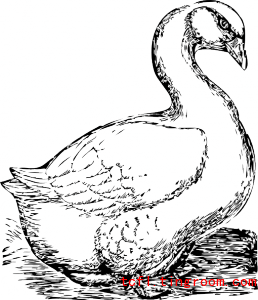In this Pinyin Lesson, we learn how to pronounce single vowels or called single finals of pinyin. We also learn some Chinese characters that use these single finals. In addition, you can have tone drill and quiz on single finals.
Syllable
A syllable is a unit of organization for a sequence of speech sounds. It is typically made up of a syllable nucleus (most often a vowel) with optional initial and final margins (typically, consonants). Syllables are often considered the phonological “building blocks” of words.
Nucleus
Generally, every syllable requires a nucleus (sometimes called the peak), and the minimal syllable consists only of a nucleus.
Initials and Finals
The pronunciation and spelling of Chinese words are generally given in terms of initials and finals, which represent the segmental phonemic portion of the language, rather than letter by letter. Initials are initial consonants, while finals are all possible combinations of semivowels coming before the vowel, the nucleus vowel, and final vowel or consonant.
A semivowel is a sound that is phonetically similar to a vowel sound but functions as the syllable boundary rather than as the nucleus of a syllable.
Single Vowels
There are 6 single vowels (finals) in Chinese Pinyin.
Pronunciation Guide
The following guide is given in terms of English pronunciation. They are approximate, as there are some sounds of Pinyin do not correspond directly to sounds in English.
1. a: as in “father”.
2. o: approximately as in “office” in British accent; the lips are much more rounded.
3. e: approximately as in “idea”.
4. i: as in “bee”.
5. u: as the “oo” as in “pool”.
6. ü: to get this sound, say “ee” with rounded lips.
Notes:
“i” represents three different sounds dependent on the initial that precedes it. When it follows the so-called sibilant initials (z, c, s), it sounds like “zz”. When it follows the retroflex initials (zh, ch, sh, and r) it sounds like “rr”. In all other cases, it sounds like the English “ee”.
“ü” is written as “u” (no ūmlaut) after j, q, x, or y.
Example Words
| Example 1:
Chinese Character: 啊 English translation: Ah |
 |
| Example 2:
Chinese Character: 喔 English translation: Oh |
 |
| Example 3:
Chinese Character: 鹅 English translation: goose |
 |
| Example 4:
Chinese Character: 一 English translation: one |
 |
| Example 5:
Chinese Character: 五 English translation: five |
 |
| Example 6:
Chinese Character: 鱼 English translation: fish |
 |
Exercises:
Exercise 1: Tone Drill
Listen to the audio first, and then repeat.
1. ā á ǎ à
2. ō ó ǒ ò
3. ē é ě è
4. ī í ǐ ì
5. ū ú ǔ ù
6. ǖ ǘ ǚ ǜ



